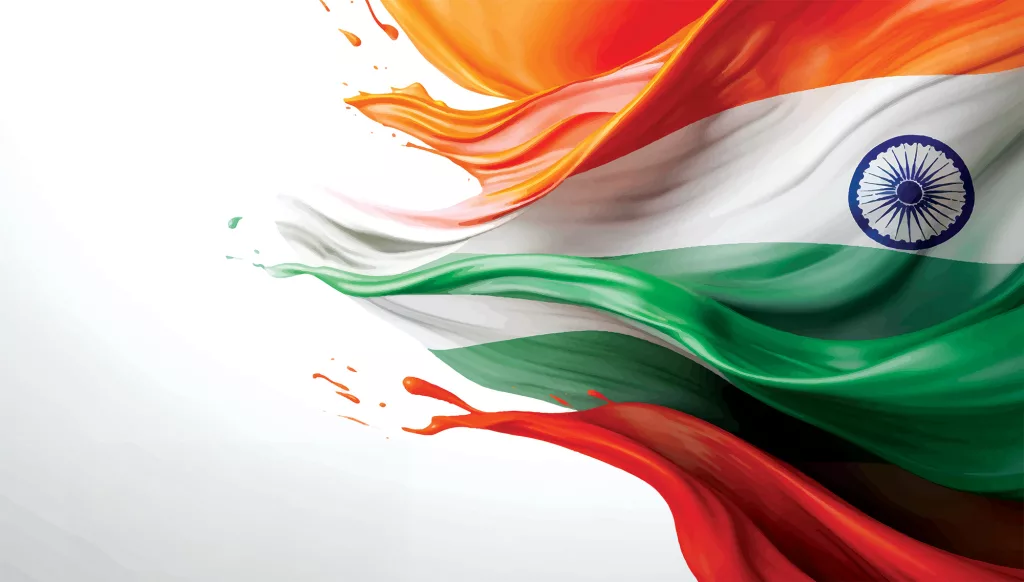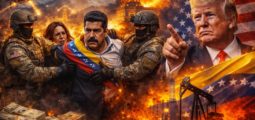Exploring India’s Rapid Economic Growth
The government’s efforts on labour, tax, and financial inclusion have hastened the country’s economic recovery.
India’s economic growth has emerged as a defining story of victory in the past decade.

It’s the world’s fifth-largest economy, with a nominal GDP of around $3.5tn – and it’s still growing. With an average annual pace of six to seven percent, it’s attracting the interest of investors, businesses, and governments.
India’s expanding middle-class, rapid urbanisation and massive investment in infrastructure have propelled the economy to new heights.
Even during the Covid-19 pandemic, India showed tremendous resilience. The government’s efforts on labour, tax, and financial inclusion have hastened the recovery.
There are fundamental drivers, sectoral dynamics, and difficulties in India’s story.
Historical Context
Since independence in 1947, India has seen substantial reforms. For the first four decades, the country had a socialist-inspired, centrally-planned economic model. This prioritised self-sufficiency and state control over critical sectors, and resulted in stagnation and inefficiency.
The watershed came in 1991, when a balance-of-payments crisis drove the nation to economic liberalisation. Under the guidance of then-Prime Minister PV Narasimha Rao and finance minister Manmohan Singh, India implemented reforms that opened the economy to global markets, lowered trade barriers, and attracted foreign investment.
In the following decades, the country’s economy was market-driven. The changes of the early 2000s significantly liberalised the banking sector and encouraged private enterprise. Recent government initiatives, such as the promotion of local manufacturing, Digital India (aiming to strengthen digital infrastructure), and the Goods and Services Tax, have simplified rules.
These moves have created a framework for rapid growth, placing India as a major destination for foreign investment.
Demographic Dividend
With some 65 percent of the population under the age of 35, India has a young workforce. This, combined with expanding urbanisation, has resulted in a larger middle-class – with more spending power.
Digital Transformation
The digital economy has played an important role in all this. India has the world’s second-highest population of internet users, which has revolutionised business functions. Initiatives like Digital India, and rising smartphone penetration, have boosted the e-commerce, fintech, and online education sectors.
Manufacturing and Infrastructure
Manufacturing and infrastructure are crucial. The production-linked incentive programme has encouraged domestic and foreign manufacturers to expand operations in electronics, medicines, and vehicles. Expenditure on highways, ports, and urban growth have improved the business environment.
Financial Reforms
India’s financial system has undergone major reforms to increase financial inclusion and stability. Government programmes such as the Jan Dhan Yojana (banking access) and the Unified Payments Interface (UPI) have been transformational for the unbanked sector of the population, and have enabled digital payments in both rural and urban areas.
Sectoral Analysis: Services Sector
The services sector – IT and business process management – has boosted India’s global standing. The IT industry, which includes companies like TCS, Infosys, and Wipro, has become a major destination for outsourcing. Financial services and telecommunications have also seen a boom.
Manufacturing
Production has accelerated, thanks to policy assistance and investment. India is a major player in the auto sphere, pharmaceuticals, and in consumer electronics. The automotive industry is a world leader – and India is a major producer of generic medications.
The Agriculture Factor
Despite the obstacles, agriculture is a critical component of India’s economy, employing a sizable proportion of the workforce. Efforts to modernise farming processes, diversify crops, and enhance supply systems are ongoing. The development of agri-tech is helping to improve production and distribution.
Start-up Ecosystem
India’s new business environment is thriving, with more than 100 unicorns. Fintech, health-tech, and ed-tech are burgeoning sectors, thanks to venture-capital inflows and government support. Companies such as Flipkart, BYJU’S, and Paytm have earned global recognition.
India has historically relied on FDI, particularly in the IT sector, manufacturing, and telecommunications. But the country’s bilateral and multilateral trade agreements have amplified its global presence. The “Act East” policy has expanded connections with South East Asia, while collaborations with countries such as the US and Japan have helped its economic position.
Income Inequality
India suffers from substantial income differences between urban and rural areas. While cities thrive on innovation and employment, countryside areas face poverty and lack possibilities. The rural-urban divide is an impediment to inclusive progress.
Despite massive infrastructure investments, India continues to experience shortfalls in energy, transport, and infrastructure. The overloaded electrical grid, congested roadways, and lack of sustainability in urban design all impede economic advancement.
Environmental Concerns
Rapid industrialisation has worsened pollution, deforestation, and water scarcity. Addressing environmental issues while pursuing economic growth is vital to sustainable development.
Regulatory and Bureaucratic Hurdles
Although reforms have made doing business easier, red tape and regulations continue to pose challenges. Streamlining approval processes and minimising corruption are crucial for increasing investor confidence.
Global geopolitical landscape
Economic development is influenced by geopolitical strategy, too. India strikes a balance between partnerships with the US, Japan, and Australia (aka the Quad) and China. The ongoing border tensions and trade dynamics with China have had an influence on the global supply chain. India wants to lessen reliance on Chinese imports and strengthen ties with the US and the EU.
Outlook and Future
India’s economic trajectory is encouraging, with forecasts that the economy could exceed $5tn by 2027. Renewable energy, biotechnology and AI are promising areas for growth. The government’s emphasis on digital infrastructure, industry incentives, and labour market reforms should bolster economic stability.
While difficulties such as income disparity, regulatory barriers and environmental sustainability persist, India can capitalise on the size of its population and its digital expertise.
This rapid economic growth is a sign of a nation on the move, aided by governmental changes, a young workforce, and vibrant digital innovation. The combination of technology, manufacturing, and global trade is creating a dynamic economy. But for India to reach its full potential, inclusive growth and sustainability must be addressed.
But this is a growing country, set to transform the global economic landscape.
You may have an interest in also reading…
Edelweiss – An Indian Financial Powerhouse
Edelweiss is a leading Indian financial services conglomerate that provides a wide range of financial products and services, serving a
India in a Strong Position to Tap Global Growth
Unlike most developing countries, India’s recent growth has been well below potential, which provides space for economic activity to accelerate
Joy to the World — Founding Father of Indian Company with Mission for Health
“When you spread joy, it returns to you multiplied,” says Huzaifa Khorakiwala, more commonly known as “Sir Dr Huz”. Wise




















































































